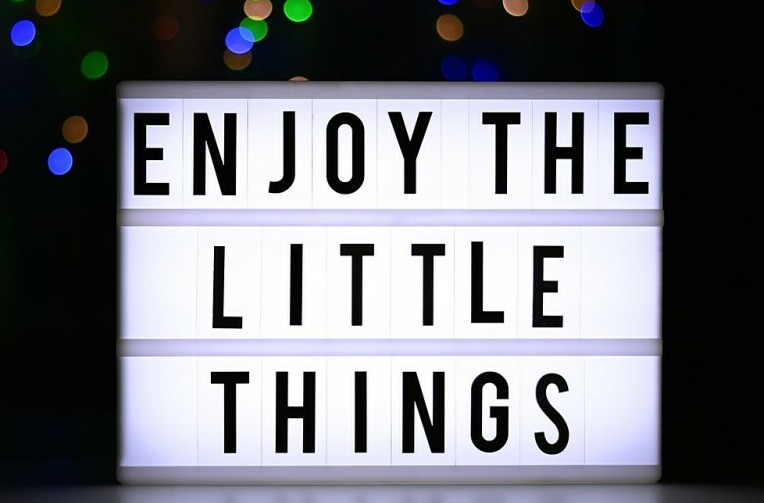Our brains can be trained, and gratitude is one of the best trainers out there. Neuroplasticity, the brain’s ability to reorganize itself by forming new neural connections, plays a crucial role here. By consistently practicing gratitude, you’re literally changing the structure of your brain to amplify positive emotions.

The neurochemistry of gratitude rests on the release of dopamine and serotonin, the same neurotransmitters that give us a sense of happiness and satisfaction when we achieve a goal or share a moment with loved ones. The practice of gratitude starts to lay its golden path when we take the time to genuinely cherish fleeting moments of life and pause to think about them.

Having gratitude can turn the ordinary moments of daily life into endless supply of unforgettable experiences. This goes beyond simply expressing gratitude. It’s also about a deep recognition of the goodness that surrounds us, which we frequently ignore.
Let’s focus on being intentional in recognizing these moments. Pick something that makes you feel good, like the sun’s warmth, whether it’s the warmth of the sun, a kind gesture from a stranger’s kindness, or simply being alive. In my opinion, understanding gratitude as an emotional transformer requires us to be in the moment and mindful.
The neurochemistry of gratitude rests on the release of dopamine and serotonin, the same neurotransmitters that give us a sense of happiness and satisfaction when we achieve a goal or spend time with loved ones.
It sounds pretty crazy, doesn’t it? That something so simple can have such an impact on our general well-being. There’s a lot of opportunity in pausing to reflect on these snippets of life and truly cherishing them, and this is how the practice of gratitude begins to lay its golden path.
Rewiring the Brain: The Neuroscience of Grateful Thinking
Our mirror neurons, the cells responsible for empathy, light up when we express or witness gratitude. It’s like a neurological handshake that says, ‘I see you, and I understand you.’ This connection leads to stronger, more empathetic relationships in your life.
Isn’t it fascinating that being thankful could even tweak the levers of your brain’s stress response? Frequent gratitude exercises can lower the baseline for stress, helping you to keep your cool when life throws curveballs your way.
It’s not just about feeling better in the moment; it’s about creating a long-lasting sanctuary of calm in your mind.
This isn’t just about the individual either. Imagine a community where gratitude thinking is common. Now what is a big publisher of happiness? Shared connections and unity within our circles. Let us explore less beaten paths where gratitude can lead us.
The Gratitude Labyrinth: Exploring Paths Less Taken

Now imagine gratitude as a labyrinth. Unlike a maze, there are no dead ends, just a single, convoluted pathway leading to a tranquil center. In gratitude practice, this labyrinth represents the journey through unconventional methods that ultimately center us in happiness.
For a novel twist, instead of writing what you’re thankful for, say it out loud. Start your day by declaring three things you’re grateful for. Try verbalizing your appreciation for the crispness of the morning air, the warmth of your coffee, or the smile from a stranger. Speaking gratitude into existence adds an auditory dimension to the feeling, reinforcing its power.
Physical appreciation takes this a step further. When’s the last time you literally embraced a tree, feeling its bark, and recognized it for its shade, beauty, or even its contribution to clean air? Engaging in tactile expressions of gratitude anchors us more deeply in the present moment, fostering a richer sensory experience.
The appreciation for our hurdles is arguably the most unconventional yet potent form of gratitude. When facing a challenge, pause and express thankfulness for the growth it offers. By acknowledging the strength and resilience brewed from adversity, you can transform barriers into stepping stones to a more contented life.
In the next section, we’ll see how taking our private feelings of gratitude and spilling them into our community can have magnifying effects. It’s not just about achieving personal happiness, but also about sowing seeds of joy that can germinate throughout our social landscape.
Social Synergy: The Ripple Effects of Shared Gratitude

I’m going to let you in on something amazing: gratitude isn’t just a solo act. It’s a powerful force that can weave people together, creating bonds that are much stronger than you might guess. That’s going to include the ways shared gratitude can positively impact communities and relationships. Imagine attending a community event where everyone shares something they’re grateful for. The atmosphere becomes infectious with positivity, doesn’t it?
You’re going to find out about inspiring case studies which demonstrate the immense power collective gratitude has. Take, for example, a workplace where employees begin meetings by expressing appreciation for their colleagues. Productivity and morale skyrocket. This isn’t just about feeling good; it’s also about driving tangible, positive change in group dynamics.
Gratitude isn’t limited to saying ‘thank you’ to someone who holds the door for you. It’s about nurturing a climate where appreciation is a reflex, not an afterthought. We’ll explore strategies for embedding this ethos into various social structures, be it at home, in workplaces, or amongst friends. Think of it as social glue that not only holds but strengthens the fabric of relationships.
Choose something that resonates with you: maybe it’s starting a gratitude board at the office, or a family gratitude jar where each member drops notes of appreciation. There’s a lot of opportunity in weaving gratitude practices into community initiatives, like local clean-ups or volunteer groups, where the impact can be both deeply personal and widely communal.
Cultivating a Personal Gratitude Ecosystem

I’m here to help you weave gratitude into the very fabric of your daily life. It isn’t just about saying thank you; it’s about creating a personalized gratitude ecosystem. This encompasses the habits and rituals that make thankfulness a cornerstone of your existence.
Choose something that resonates with you, be it a morning thank-you note to yourself, a gratitude stone in your pocket, or a weekly volunteer session. There’s a myriad of ways to embed gratitude into your lifestyle, each uniquely tailoring to your personality and routine.
This isn’t just about feeling better in the moment; it’s about long-term empowerment. Integrating gratitude practices into your life is linked with enhanced self-esteem and goal achievement. Over time, this gratitude ecosystem contributes not just to a happier you, but to a more fulfilled and purpose-driven life.
Your first attempt at shaping this ecosystem doesn’t need to be your last. You can always adjust your approach down the road, experimenting with new ways to express and experience gratitude. Remember, the goal isn’t perfection; it’s progress toward a more joyful and appreciative way of being.
In my opinion, the most powerful aspect of a personal gratitude ecosystem is how it enriches every facet of our lifestyle. From better relationships to greater resilience, the tendrils of thankfulness reach far and wide.
I really hope that you embark on this journey of gratitude with an open heart and mind. As you do, you’ll likely discover how honoring the good in your life can transform the ordinary into the extraordinary, one grateful moment at a time. Let’s cherish these moments and cultivate a world where gratitude thrives within us and around us.


This post beautifully encapsulates the transformative power of gratitude in shaping our mental landscape and enhancing our overall well-being. By delving into the neuroscience behind gratitude, it elucidates how the practice rewires our brains, fostering a sanctuary of calm amidst life’s challenges. Moreover, the post extends beyond individual benefit, emphasizing the communal ripple effects of shared gratitude in strengthening social bonds and fostering collective positivity. What sets this piece apart is its practical approach, offering actionable steps to integrate gratitude into daily life, from verbal expressions to tactile experiences and community initiatives. It’s a compelling invitation to embark on a journey of gratitude, reminding us to cherish each moment and cultivate a world where appreciation flourishes.
Thank you. The realization that gratitude plays an important role in our lives is a crucial one.for our happiness.
Gratitude is such an essential part of living a full and happy life. Dopamine and serotonin are definitely our friends. Neuroscience has done so much to bring clarity to this issue. Each moment is precious and enjoying the little things is the foundation for a happy existence. I found your information on the gratitude labyrinth and rewiring the brain extremely helpful. I love the idea of a personal gratitude ecosystem. You have spelled out the essence of gratitude and how it has the potential to transform our lives.
Thank you Joseph. Being grateful is a blessing.
Robyn.